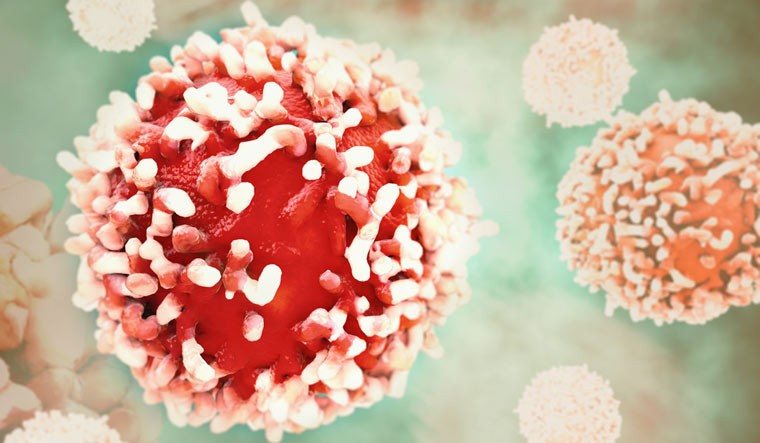CAR T-cell therapy is heralded as a cutting-edge breakthrough in cancer treatment. In India, one out of every nine people are likely to develop cancer during their lifetimes. CAR T-cell therapy uses the body’s own special immune cells to tackle the disease.
Excerpts from an interview with Dr. Ashok Kumar Vaid, chairman, Medical and Haemato Oncology, Cancer Institute, Medanta, Gurugram.
Q: What is CAR T-cell therapy and what’s new about it?
A: Earlier, cancer treatment used to rely purely on surgery, chemotherapy, and radiation therapy. However, in the 2000s, new ways to fight cancer such as targeted therapy and immunotherapy were introduced. It uses special immune T-cells, which our bodies use to fight off diseases. In this therapy, we change these T-cells to make them better at finding and attacking various threats, including cancer cells, viruses, and bacteria. This highly targeted and dynamic therapy represents a significant advancement in cancer treatment, offering the potential to specifically target cancer cells with a precision that was previously unimaginable.
Q: How does the therapy work?
A: T-cells are engineered to incorporate a Chimeric Antigen Receptor (CAR) on their surface. These T-cells can be obtained either from the patient’s own blood (Autologous) or from another donor (Allogenic). This CAR is meticulously designed to recognise and bind with specific proteins found exclusively on the surface of cancer cells. This process transforms T-cells into dynamic agents with dual functionality, essentially akin to a twin drug. These engineered T-cells undergo a process of expansion, producing millions of cells within a laboratory setting.
Subsequently, these multiplied cells are introduced into the patient through intravenous infusion. These CAR T-cells are then expected to continue multiplying within the patient's body, guided by their engineered receptors. This proliferation enables them to detect and eliminate any cancer cells expressing the specific protein targeted by the CAR. These cells function as living therapeutic agents within the patient’s system. They travel throughout the body, recognising and engaging with cells that express the specific protein associated with the cancer. Once engaged, the CAR on the T-cell activates and subsequently eliminates the targeted cancer cells.
Simply put, first T-cells are modified in a lab to recognise cancer cells. Then, these modified T-cells are infused into the patient’s body. These cells keep growing inside the patient, finds and destroy cancer cells with precision.
Q: Who are the primary candidates eligible for CAR T-cell therapy?
A: Much of the research in CAR T-cell therapy has been focused on leukaemias and lymphomas, typically involving patients who have experienced treatment failures, including bone marrow or stem cell transplants. The patients who have faced the recurrence of their leukaemia or lymphoma also becomes eligible candidates for CAR T-cell therapy. More recently, CAR T-cell therapy has been approved for use in multiple myeloma as well. Examining these tumors, it's evident that most are associated with blood or blood-like structures in the body, such as the lymph nodes, primarily linked to the immune system within the lymph nodes.
While research has also been conducted in the context of solid tumors, the outcomes have not been as successful for several reasons. Solid tumours generally lack a singular protein or antigen that CAR T-cells can effectively target, and the physical structure of solid tumours makes it challenging to deliver CAR T-cells to their core. Consequently, CAR T-cell therapy has not yielded the same results for solid tumors found in organs like the lungs or breast.
However, CAR T-cell therapy has achieved more significant success in treating relapsed and refractory acute lymphoblastic leukemia, B-cell non-Hodgkin’s lymphomas, certain lymphomas like mantle cell lymphomas, and multiple myeloma. These are the approved indications to date, but ongoing research is broadening the spectrum of tumors under investigation. As scientific understanding progresses, CAR T-cell therapy is expected to be applied to a wider range of cancer types.
Q: What are the side effects of the therapy?
A: When CAR T-cells are infused into the body, they may trigger reactions and side effects. These side effects are commonly associated with the engagement of CAR T-cells with target cells, such as cytokine release syndrome (CRS), which is the most frequent and severe side effect of CAR T-cell therapy. Despite these side effects, they are generally accepted in the majority of cases, as they indicate the activation of CAR T-cells against cancer cells.
The side effects associated with (CRS) are due to specific chemicals released by CAR T-cells during their interaction with cancer cells. These chemicals circulate in the bloodstream, which is the intended target to combat cancer. However, side effects may affect other organ systems, including the brain, lungs, and the immune system itself. These side effects can lead to severe complications such as high fever and a drop in blood pressure, swelling in the brain and other internal organs etc.
Q: Are these side effects manageable?
A: Doctors employ various strategies to manage these side effects, and patients are typically kept in the hospital for monitoring and treatment. There are effective methods to mitigate these side effects, including the use of specific medications during the hospitalisation. Essentially, in CRS, there is inflammation in internal organs, prompting the administration of drugs to counteract this inflammation, particularly in the brain, lungs, and other parts of the body. These drugs may include steroids and certain monoclonal antibodies specifically designed to address CRS.
Q: What are some notable successes or breakthroughs that have been observed with CAR T-cell therapy with regard to personalised cancer treatment?
A: CAR T-cell therapy is a firmly established and remarkably effective treatment for patients with relapsed acute lymphoblastic leukemia, as well as certain relapsed lymphomas and myelomas. These individuals have previously exhausted various treatment options and currently have limited therapeutic alternatives available to them for either management or a potential cure. CAR T-cells represent a remarkable success story in the realm of medical science, marking the forefront of innovative advancements.
Q: How do you envision CAR T-cell therapy evolving in the next few years, and what impact could it have on the landscape of cancer treatment?
A: The research in CAR T-cell therapy is an ongoing and rapidly evolving field. Numerous clinical trials are currently underway, driven in part by the identification of additional targets on tumour cells. This bodes well for the development of future CAR T-cell therapies. Up to this point, two primary antigens have been utilised: CD19 for leukaemia and lymphoma and BCMA for myeloma. The currently approved CAR T-cell therapies, totalling around half a dozen, have focused on these two targets.
However, as new targets are identified, particularly in tumour types like breast, kidney, and brain cancer, we anticipate further advancements. These developments should be regarded as significant successes in the realm of medical science.
It’s worth noting that CAR T-cell therapies have encountered challenges in treating solid tumours due to the unique micro-environment in which these tumours exist. Scientists are actively working on designing solutions to enhance the effectiveness of CAR T-cell therapies in solid tumours. As our understanding continues to expand, the growth of CAR T-cell therapies is expected, potentially encompassing a broader range of tumour types in the future.


